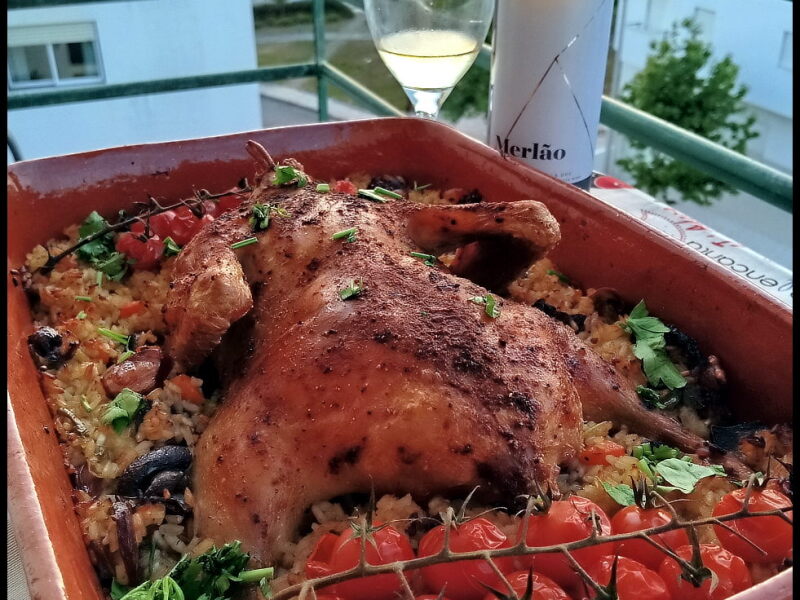Waterblommetjiebredie is a traditional South African stew made with waterblommetjies, which are small water lily flowers found in freshwater ponds and marshes. The dish originated in the Western Cape region of South Africa and is known for its unique and earthy flavors.
Ingredients typically used in waterblommetjiebredie include waterblommetjies (Aponogeton distachyos flowers), meat (often lamb or mutton), onions, tomatoes, and a blend of spices. The dish is slow-cooked to allow the flavors to meld together, resulting in a hearty and flavorful stew.
Waterblommetjies have a slightly tangy and vegetal taste, and when cooked, they absorb the flavours of the meat and spices in the stew. The dish is often enjoyed with rice, barley, potatoes or traditional South African sides like mieliepap.
Waterblommetjiedbredie is a cherished dish in South African cuisine, and it reflects the country’s culinary heritage and use of locally available ingredients. It’s especially popular during the colder months as a warming and comforting meal.
So, I got my hands on some fresh waterblommetjies and decided to give it a try, slightly moving away from the traditional style. You will need the following ingredients:
Ingredients
- 3kg fresh waterblommetjies
- 2 cups dry butter beans
- 150g guanciale, thick bacon or rashers, cut into 1cm cubes
- 2kg lamb or mutton stewing meat
- 2 medium onions, chopped
- 6 garlic cloves, chopped
- 1 celery stalk, leaves on, chopped
- 1 medium carrot, grated
- 750ml quality lamb / mutton / chicken stock
- 3 bay leaves
- 3 thyme sprigs
- 1 Tbsp black peppercorns, roasted crushed
- 1 Tbsp fennel seeds, roasted
- 1 Tbsp cumin seeds, roasted
- 60ml Worcestershire sauce
- 1 lemon, juiced
- Parsley, chopped for garnish
- Oil
- Salt
Method
Place the waterblommetjies and beans into a sizeable pot with a lid, and ensure they are well-covered with water. Incorporate 25ml of salt for every 1 liter of water utilized.
Bring the water to a boil and then let the mixture cook over low-medium heat until the beans reach a tender consistency, typically taking around 2 to 2½ hours.
Afterward, strain the waterblommetjies and beans from the water, discarding the liquid.
In another sizable pot, placed over medium heat, add a dash of oil. Crisp-fry the guanciale or bacon until it turns delightfully crisp. Remove the guanciale with a slotted spoon and set it aside.
Within the same pot, proceed to brown the meat in batches over a medium to high heat, adding more oil if necessary. After each batch, remove the meat and set it aside.

Once again, in the same pot, include the carrots, onions, celery, garlic, bay leaves, and thyme. Allow this mixture to cook for approximately 5 minutes, ensuring you scrape up all the flavorful bits from the bottom of the pot.

Pour in the stock, bring it to a boil, and reintroduce the meat, along with black pepper, fennel, and cumin. Reduce the heat and let it simmer for about 2 hours, ensuring the lid remains on. Stir intermittently during this time.
Add the Worcestershire sauce and lemon juice, giving everything a good stir, and making any necessary salt adjustments.
Gently fold in the waterblommetjies and bean mixture, combining everything with care.
Serve the dish with your favourite starch (we did roasted potatoes this time) and garnish with chopped parsley and the crispy guanciale on top.
The Wine

We enjoyed this with a delicious 2019 La Cave Pinotage from Wellington Wines with the following accolades:
- Veritas Wine Awards – Gold
- Michelangelo International Wine & Spirits Awards – Gold
- Platter’s Wine Guide – 4.5*
- SA Wine Index – Platinum
Here is the fact sheet:


